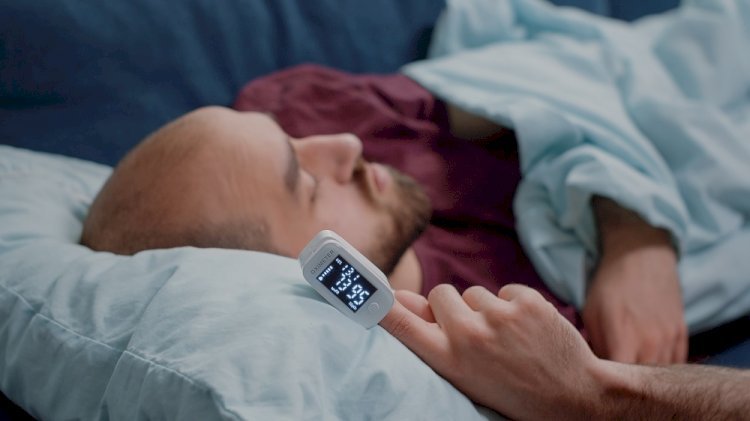MSLT Test for Narcolepsy: Diagnosing Daytime Sleepiness

Do you find yourself falling asleep unexpectedly during the day — while working, watching TV, or even driving? If so, you're not alone. Excessive daytime sleepiness (EDS) is a serious symptom that could indicate narcolepsy, a neurological sleep disorder that affects the brain's ability to regulate sleep-wake cycles. One of the most reliable tools for diagnosing narcolepsy is the MSLT test, or Multiple Sleep Latency Test.
In this article, we'll explain how the mslt test helps diagnose narcolepsy, what to expect during the test, and why it's essential for anyone struggling with unexplained fatigue or sleep attacks.
What Is Narcolepsy?
Narcolepsy is a chronic neurological disorder characterized by overwhelming daytime drowsiness and sudden sleep attacks. It can cause significant disruptions to everyday life and often goes undiagnosed for years.
Common Symptoms of Narcolepsy Include:
-
Excessive daytime sleepiness (EDS)
-
Sudden loss of muscle tone (cataplexy)
-
Hallucinations while falling asleep or waking up
-
Sleep paralysis
-
Disrupted nighttime sleep
There are two main types:
-
Narcolepsy Type 1: Includes cataplexy and low levels of hypocretin (a brain chemical that regulates wakefulness)
-
Narcolepsy Type 2: Similar symptoms without cataplexy or low hypocretin
Because many symptoms can overlap with other conditions like depression, sleep apnea, or chronic fatigue syndrome, objective testing like the MSLT test is critical for an accurate diagnosis.
What Is an MSLT Test?
The mslt test is a specialized daytime sleep study designed to assess how easily and quickly a person falls asleep in a quiet setting, and whether they enter REM (Rapid Eye Movement) sleep shortly after dozing off.
It's especially valuable for diagnosing narcolepsy, as individuals with this condition typically fall asleep rapidly and enter REM sleep unusually fast — often within 15 minutes, even during the day.
How the MSLT Test Helps Diagnose Narcolepsy
The MSLT test is the gold standard for diagnosing narcolepsy, especially when paired with an overnight polysomnography (PSG) test. Together, these tests provide detailed insights into your sleep patterns.
Key Diagnostic Indicators from the MSLT Test:
-
Sleep Latency: If your average time to fall asleep across nap trials is less than 8 minutes, it's considered abnormal.
-
Sleep-Onset REM Periods (SOREMPs): If you enter REM sleep within 15 minutes during two or more nap trials, this strongly suggests narcolepsy.
These criteria help doctors distinguish between narcolepsy and other sleep disorders such as idiopathic hypersomnia, where REM sleep does not occur quickly.
What to Expect During the MSLT Test
1. Overnight Sleep Study (PSG)
The night before your MSLT, you'll undergo an overnight polysomnography to monitor your sleep and rule out other sleep issues like sleep apnea or periodic limb movement disorder. A good night’s sleep is crucial for the accuracy of your MSLT results.
2. MSLT Test Procedure (Next Day)
-
The MSLT starts about 1.5 to 2 hours after waking.
-
You’ll have 4 to 5 nap opportunities, each spaced 2 hours apart.
-
In each session, you're asked to lie down in a dark, quiet room and try to fall asleep.
-
Sensors monitor brain activity, eye movement, and muscle tone to determine when you fall asleep and whether you enter REM.
Each nap session ends either:
-
After 20 minutes if you don’t fall asleep
-
Or 15 minutes after you fall asleep
3. Between Nap Sessions
You'll stay awake and relaxed under supervision between naps. Avoid activities that stimulate your mind, such as using screens or reading intense material.
How to Prepare for an MSLT Test
To get accurate results from your mslt test, follow these preparation steps:
-
Avoid caffeine, alcohol, and stimulants for at least 24 hours before the test.
-
Keep a sleep diary or wear an actigraphy watch for 1–2 weeks before testing.
-
Get adequate sleep the night before the test (confirmed during your PSG).
-
Discuss your medications with your doctor. Some may need to be paused or adjusted to avoid affecting your results.
-
Bring comfortable clothing, snacks, and a book (if allowed) to help pass time during the day.
MSLT Test Results: What They Mean for Narcolepsy Diagnosis
After the test, a board-certified sleep specialist will review your data and determine whether your sleep patterns align with narcolepsy.
Typical MSLT Findings for Narcolepsy:
-
Sleep Latency: Less than 8 minutes
-
SOREMPs: 2 or more
If these criteria are met — and your PSG rules out other causes — you may be diagnosed with narcolepsy type 1 or 2, depending on other symptoms (like cataplexy or hypocretin levels, which may require a spinal tap).
If You Don’t Meet the Criteria
If you don’t enter REM sleep but still fall asleep quickly, your doctor may consider a diagnosis of idiopathic hypersomnia or explore other causes of your sleepiness.
Narcolepsy and Quality of Life
Diagnosing narcolepsy with the help of an mslt test can be life-changing. Once diagnosed, many patients finally understand the root cause of their fatigue and can begin treatment, which may include:
-
Stimulant medications (modafinil, armodafinil, amphetamines)
-
Sodium oxybate for narcolepsy with cataplexy
-
Behavioral strategies: scheduled naps, good sleep hygiene, and managing daily stress
Proper diagnosis helps reduce accidents, improve productivity, and restore confidence in your daily life.
Frequently Asked Questions (FAQs)
Is the MSLT test painful?
No, it’s completely non-invasive and painless. It involves simply napping while being monitored.
Can I go home between naps?
No, you must remain at the sleep center the entire day to ensure accuracy and avoid external factors.
Will insurance cover an MSLT test?
In most cases, yes — especially when medically necessary for suspected narcolepsy or hypersomnia.
How long does the MSLT take?
The test typically lasts 6 to 8 hours, including nap trials and breaks.
Conclusion: A Path Toward Answers and Relief
If you’re struggling with persistent fatigue and daytime drowsiness, the mslt test may be your gateway to a clear diagnosis and better treatment options. For many patients, getting tested for narcolepsy is the first step toward reclaiming energy, focus, and peace of mind.
Don’t let daytime sleepiness go undiagnosed. If your symptoms align with narcolepsy or hypersomnia, ask your doctor if an MSLT test is right for you.
What's Your Reaction?














